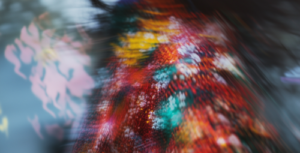24/06/2024
Welcome to the second article of our latest mini-series: ‘Sustainable Style: Designing a sustainable future for the fashion industry’. In an era defined by the urgent need for global sustainability, fashion is one of the many sectors that must play its part. Throughout this series, we will look at the critical role of intellectual property in driving innovation and economic progress, while shaping the course of the fashion industry’s development.
Introducing trends that are no longer trashy
A recent report from Stand Earth featured in British Vogue emphasises the mountains still to be climbed to make the fashion industry more sustainable. Out of 14 major brands identified within the fashion industry, only four are set to cut greenhouse emissions by the amount needed to keep global warming below 1.5 degrees Celsius. Despite the increasing focus on sustainable fashion, the industry does not appear to be on track to meet its climate targets for 2024.
Green technologies and solutions are emerging and seemingly increasingly adopted throughout the industry. In this blog we explore what is currently being done to accelerate the shift to a closed loop system in fashion.
Innovation is key to scaling up the sustainable production of clothing and takes place in many forms. From creative methods that aim to make design and manufacture more efficient through to creating new materials that are themselves sustainable.
On-demand fashion
The linear mindset introduced by fast fashion encourages companies to be continuously predicting what their customers will want, leading to a repeated overproduction of products using outdated manufacturing techniques. According to a report from the European Environment Agency, the amount of used textiles exported from the EU has tripled over the past two decades. Yet it is estimated that 10 to 45 percent of all clothes are never even sold to begin with. The overproduction, overconsumption and ruination of unsold or returned clothing needs to be addressed.
US textile innovation studio ‘Unspun’ has created the world’s first 3D weaving technology for apparel in an attempt to solve the waste problem in the industry. The company partners with brands and manufacturers who aim to streamline and decarbonise their supply chains. Unspun has partnered with Eckhaus Latta for its spring/summer 2024 ‘ready to wear ‘collection and has worked alongside the brand to produce wide-leg jeans using their new ‘Vega TM’ technology. ‘Vega TM’, 3D weaving technology produces clothes directly from thousands of individual yarns. A variable twill pattern is programmed to be woven and the Vega machine is able to produce a seamless pant leg in minutes- ‘think 3D knitting but ten times faster and five times cheaper’. Is this the new revolution in manufacturing?
Eco-friendly dyes and pigments
Synthetic dyes are typically used by manufacturers in the fashion industry, their chemical discharge often being toxic to aquatic life and causing disruption of ecosystems. Some dyes such as carbon black can even be detrimental to human health. Natural dyes are an obvious solution, offering a biodegradable alternative which requires less water and energy for production and processing. However, natural dyes cannot compete with synthetic dyes in terms of cost, performance and scalability.
‘Colorifix’ is a company that use natural pigments finding inspiration from nature. The process selects a colour created by an organism in nature, pinpoints the exact genes that lead to the production of this pigment and translates this DNA code into a microorganism. The microorganism is then able to reproduce the pigment as effected in nature. Colorifix launched a capsule with well-known fashion brand ‘PANGAIA’, introducing limited edition tracksuits dyed using the Colorifix technology. Its pigment ‘Blue Cocoon’ was used and was first discovered as a contaminant in the silk production process. Its ‘Midway Geyser Pink’ was also used and is a pigment produced by ancient bacteria in extreme conditions, likely around hot spring geysers, as the name would suggest.
Following a similar trend, Billie Eilish and Nike reworked the Nike Alpha Force Low. The black heel midsole paint and tongue top graphic of the trainer was designed using a black algae ink developed with company ‘Living Ink’ as an alternative to petroleum-based carbon black. The sustainable ink sparked headlines such as ‘algae is the new black’.
In addition to Nike, Living Ink has worked with Coach, Patagonia and Gucci parent Kering amongst other respected brands, highlighting the need for alternative, sustainable dyes and pigments. It is likely that further research into alternative dyes and pigments will occur.
Supply Chain transparency and accountability
As the industry strives to become more sustainable, being able to market a brand as ‘eco-friendly’ brings significant commercial benefits. Though the commitment must be sincere and well executed if accusations of ‘greenwashing’ are to be avoided. The textile supply chain must take accountability to reduce its environmental impact. It is important to promote transparency and honesty amongst brands and suppliers as the landscape evolves.
‘FibreTrace’ was listed in TIME magazine’s 200 best inventions of 2023. The company has developed a digital tool which can be used to verify brands sustainability claims. Consumers are able to scan a barcode to confirm their garments were sustainably produced. FibreTrace uses a luminescent pigment to embed a unique signature in a fibre, enabling brands to account for each step of the supply chain. The patented luminescent pigment is non-toxic and can be applied to fibre or yarn to ensure that the materials in the end product can be traced back to specific points in the production process. The pigment can be applied to the industry’s most popular fibres such as cotton, viscose and wool. is ensures that claims often made to materials of origin such as “made from 100% recycled plastic bottles” can be authenticated. Trials are also in process for leather and blast fibres, meaning further development from the company is to be expected.
Other breakthroughs
There are many other exciting developments occurring within the industry. These include using AI technology to identify, create and recycle materials, creating brand new materials that are an alternative to those currently used and lastly, taking inspiration from nature in the form of biomimicry to make processes more efficient. Look out for future blogs on these topics in our new miniseries dedicated to key developments in the sustainable fashion industry.
Read the next article of Sustainable Style: Leather Alternatives
Read the previous article of Sustainable Style: Materials, fashion and a circular economy.
This article is for general information only. Its content is not a statement of the law on any subject and does not constitute advice. Please contact Reddie & Grose LLP for advice before taking any action in reliance on it.



